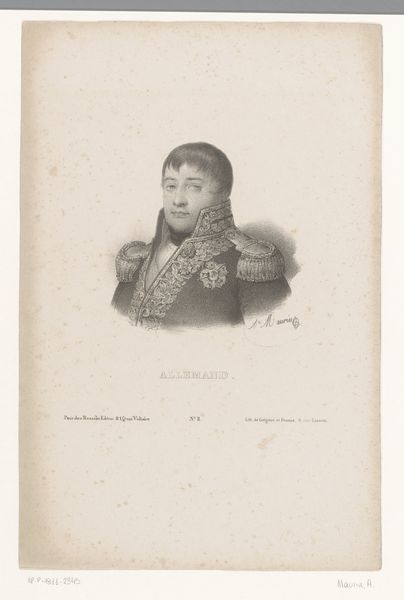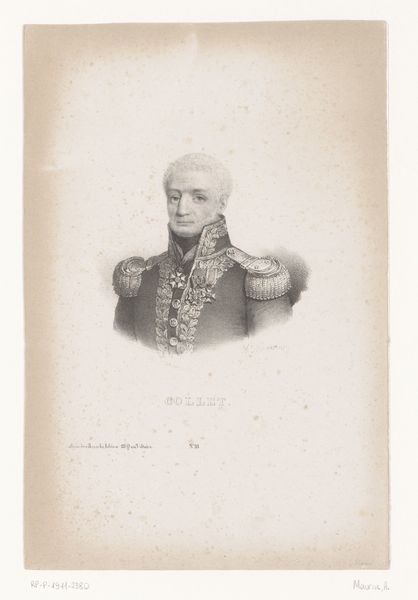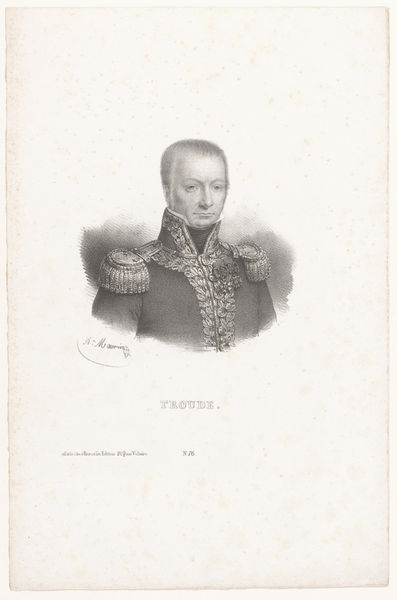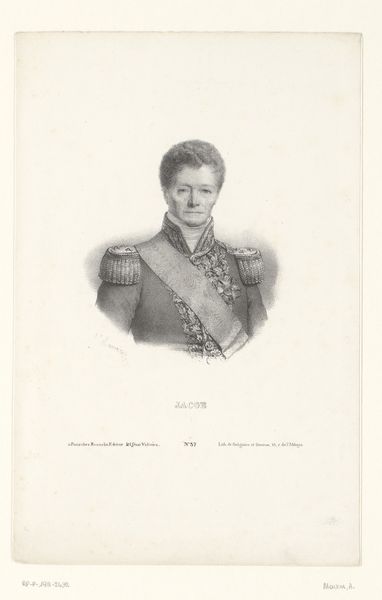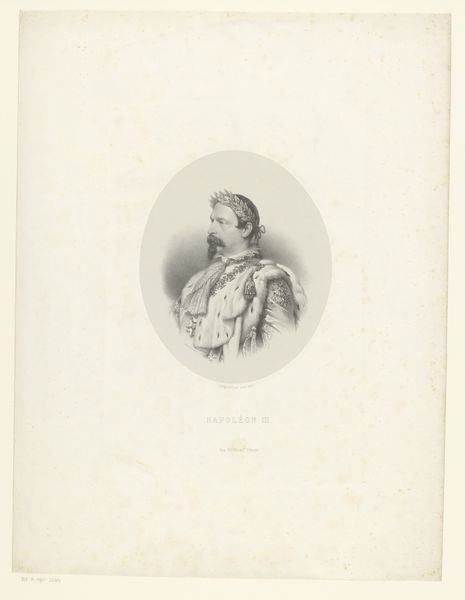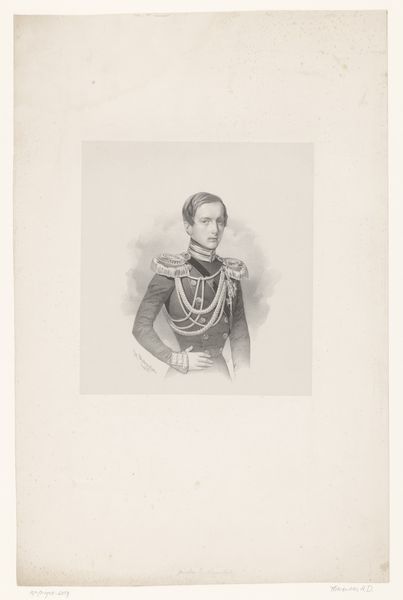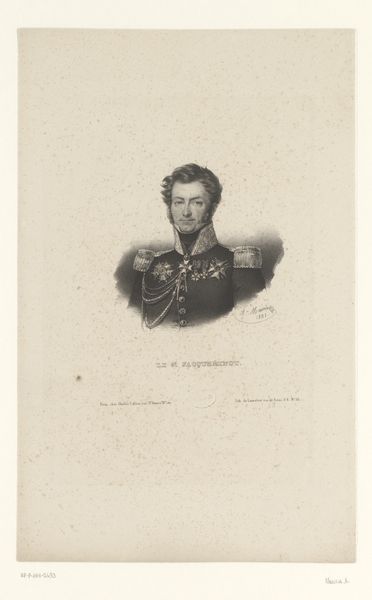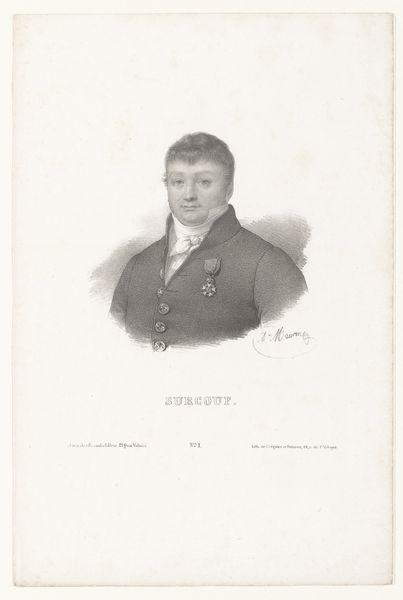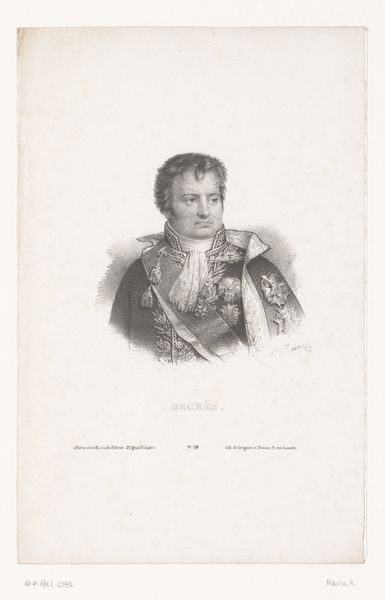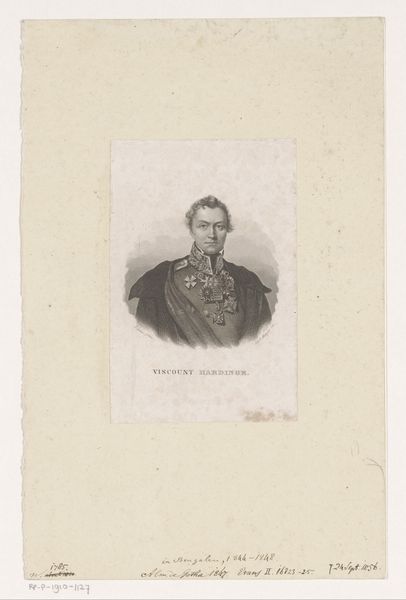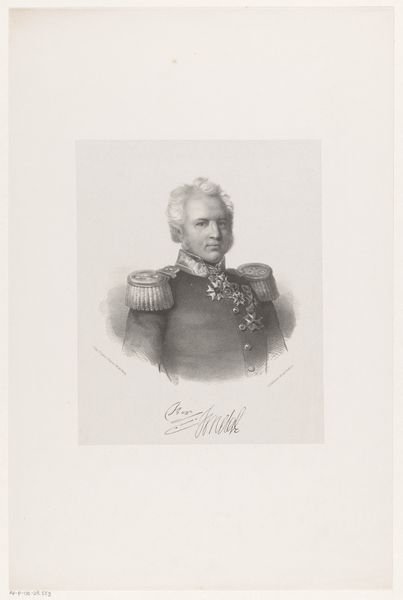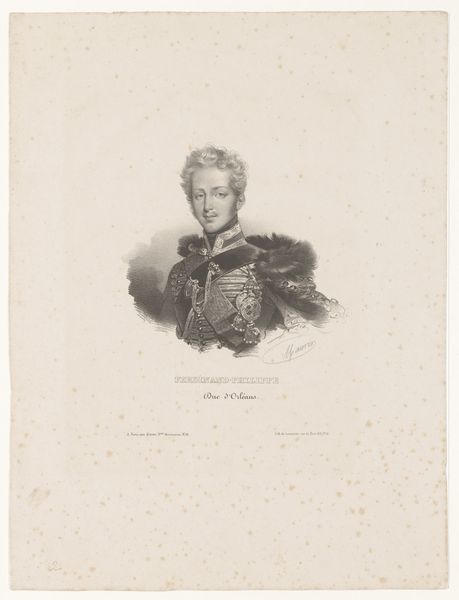
print, engraving
#
portrait
#
neoclacissism
# print
#
engraving
Dimensions: height 273 mm, width 180 mm
Copyright: Rijks Museum: Open Domain
Editor: Here we have a print from 1835, "Portret van Maxime Julien Émeriau de Beauverger" by Antoine Maurin, rendered in engraving. I’m struck by how severe the subject's expression is, yet there’s something very intimate about this small-scale work. What catches your eye when you look at this portrait? Curator: Intimate is a wonderful word for it. For me, it's the weight of those meticulously engraved details fighting against the subject’s own restrained energy. He’s clearly a figure of importance, look at the ornamentation! And yet, there's an almost palpable weariness behind his eyes, isn't there? Editor: Yes! It’s like he’s weighed down by all the finery. Almost a tension between the Neoclassical style—meant to project an image of power and order—and a hint of the man within. Do you think the artist intended for us to feel that ambivalence? Curator: It's a lovely question. Perhaps. Or maybe it’s just *my* romantic soul projecting! But engravings of this era were often about conveying status. To inject something like psychological depth, it elevates the work beyond mere documentation, wouldn’t you agree? Perhaps, if we met this Émeriau today, we would sense similar quiet power radiating from within him. Editor: That's fascinating, the idea of the artist capturing something beyond just the superficial. I hadn't considered the tension between the intention and the… perhaps unintended emotional impact. It makes me look at it with new eyes. Curator: Doesn’t it always? And isn't that the point? Art’s ability to keep whispering secrets, across the ages. Editor: Absolutely. It's incredible how a seemingly simple portrait can hold such layers of meaning and interpretation.
Comments
No comments
Be the first to comment and join the conversation on the ultimate creative platform.
